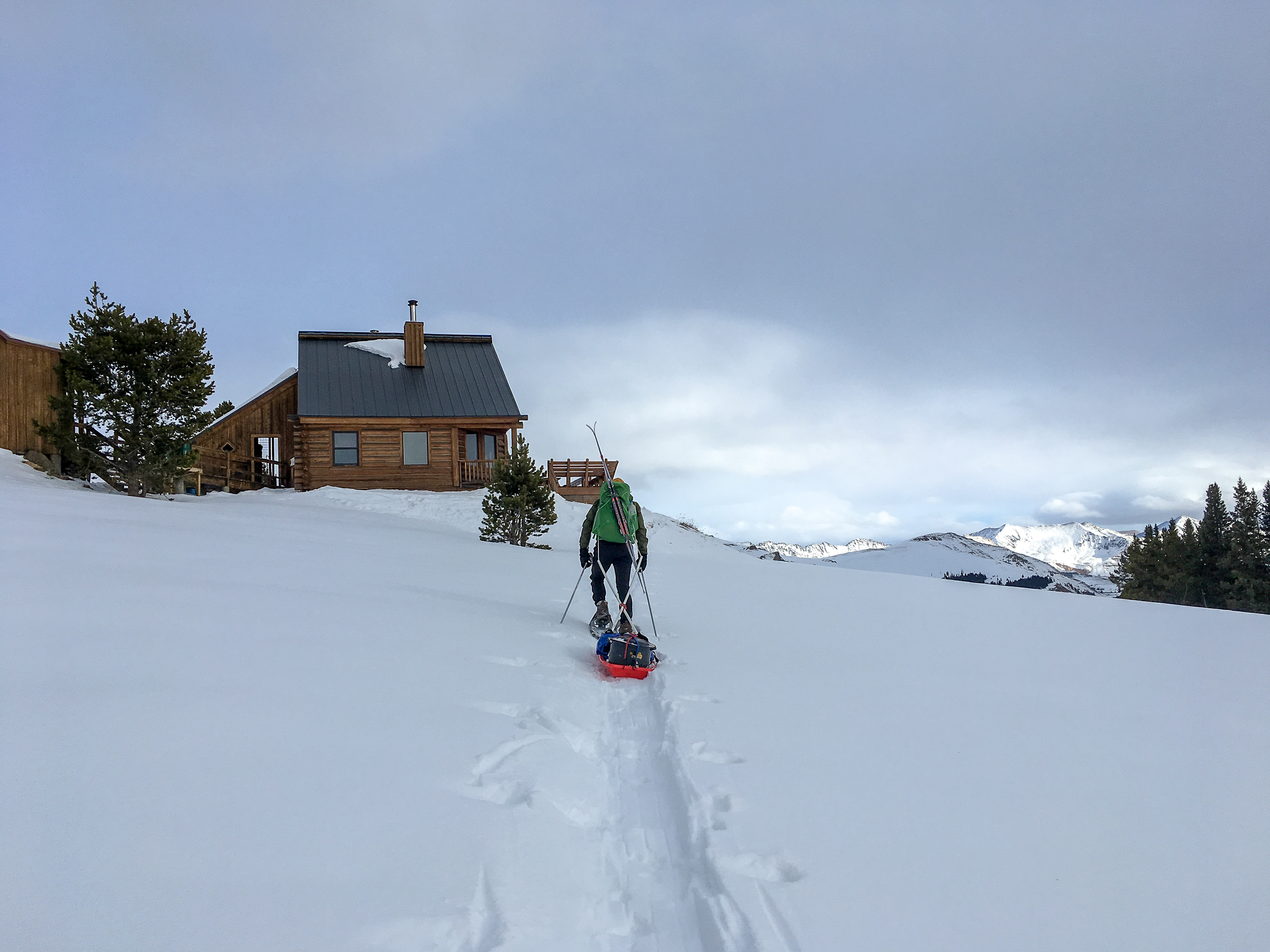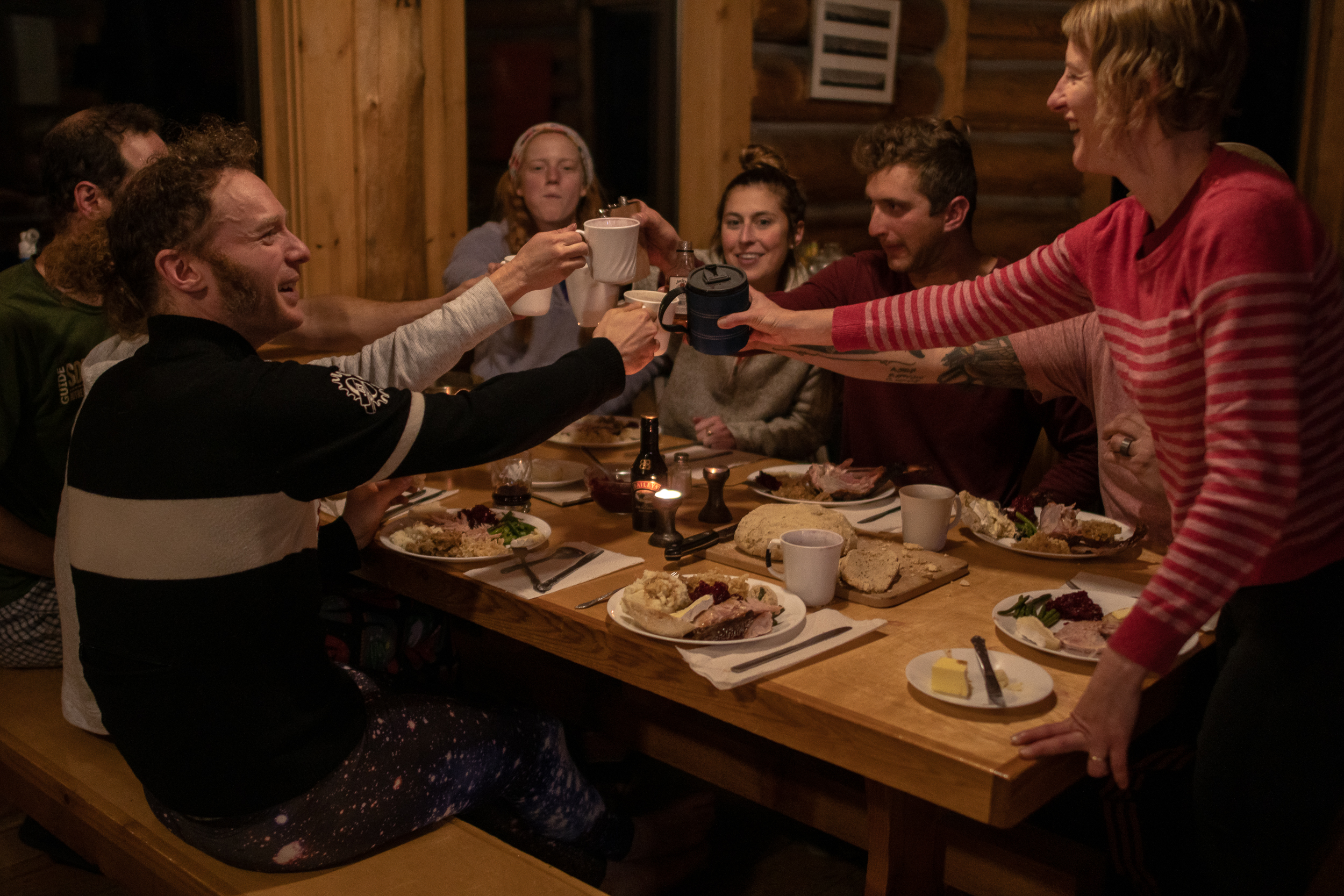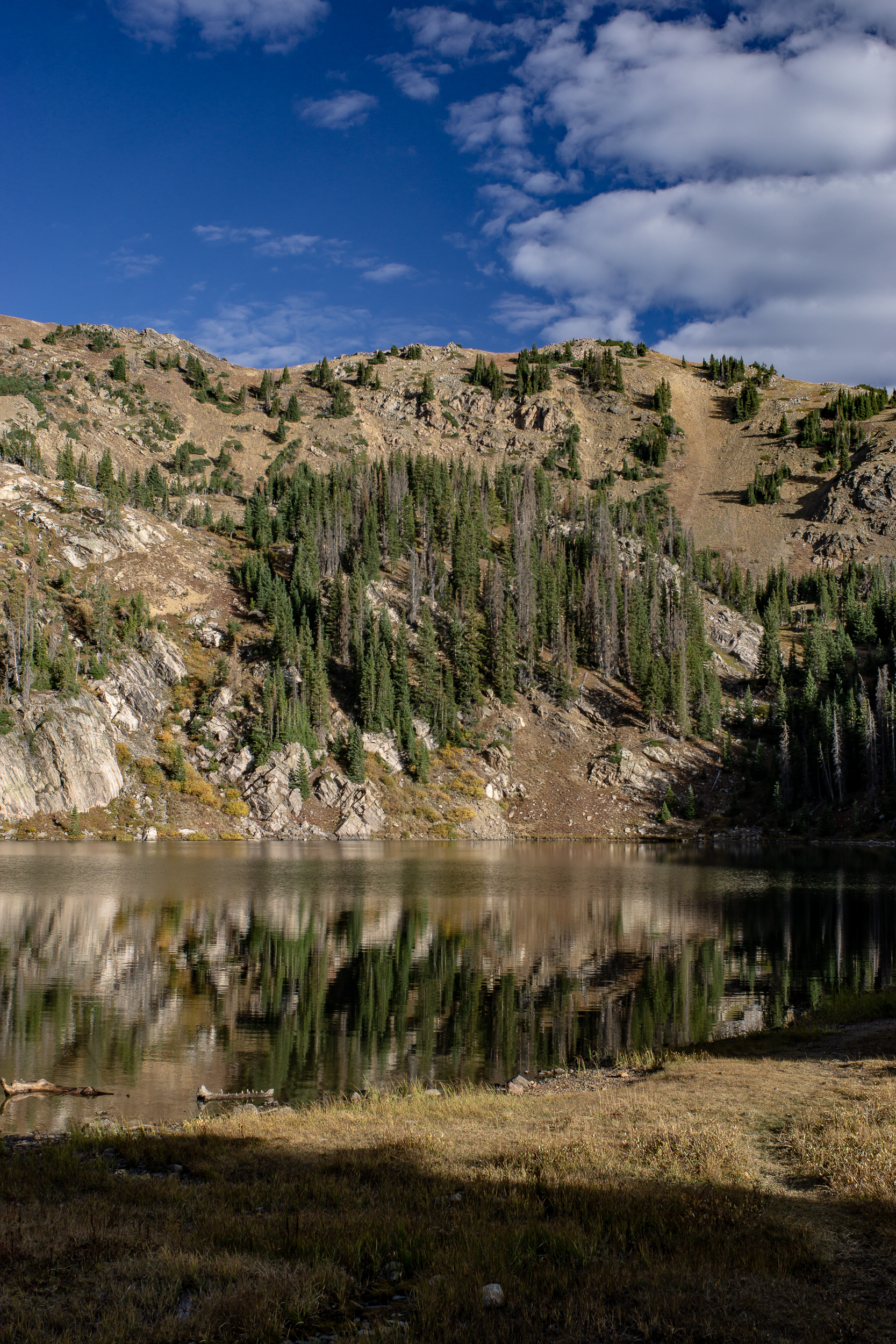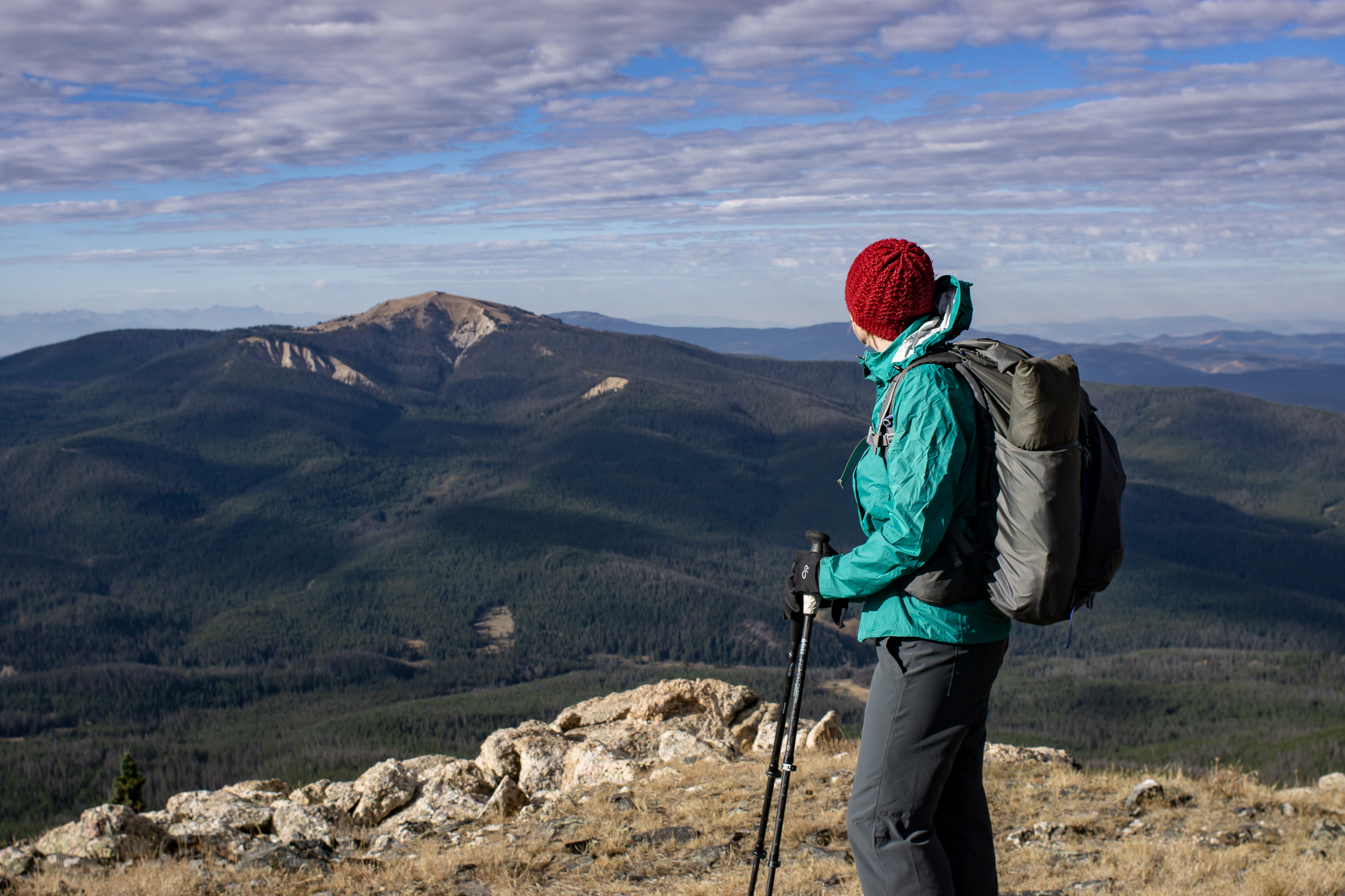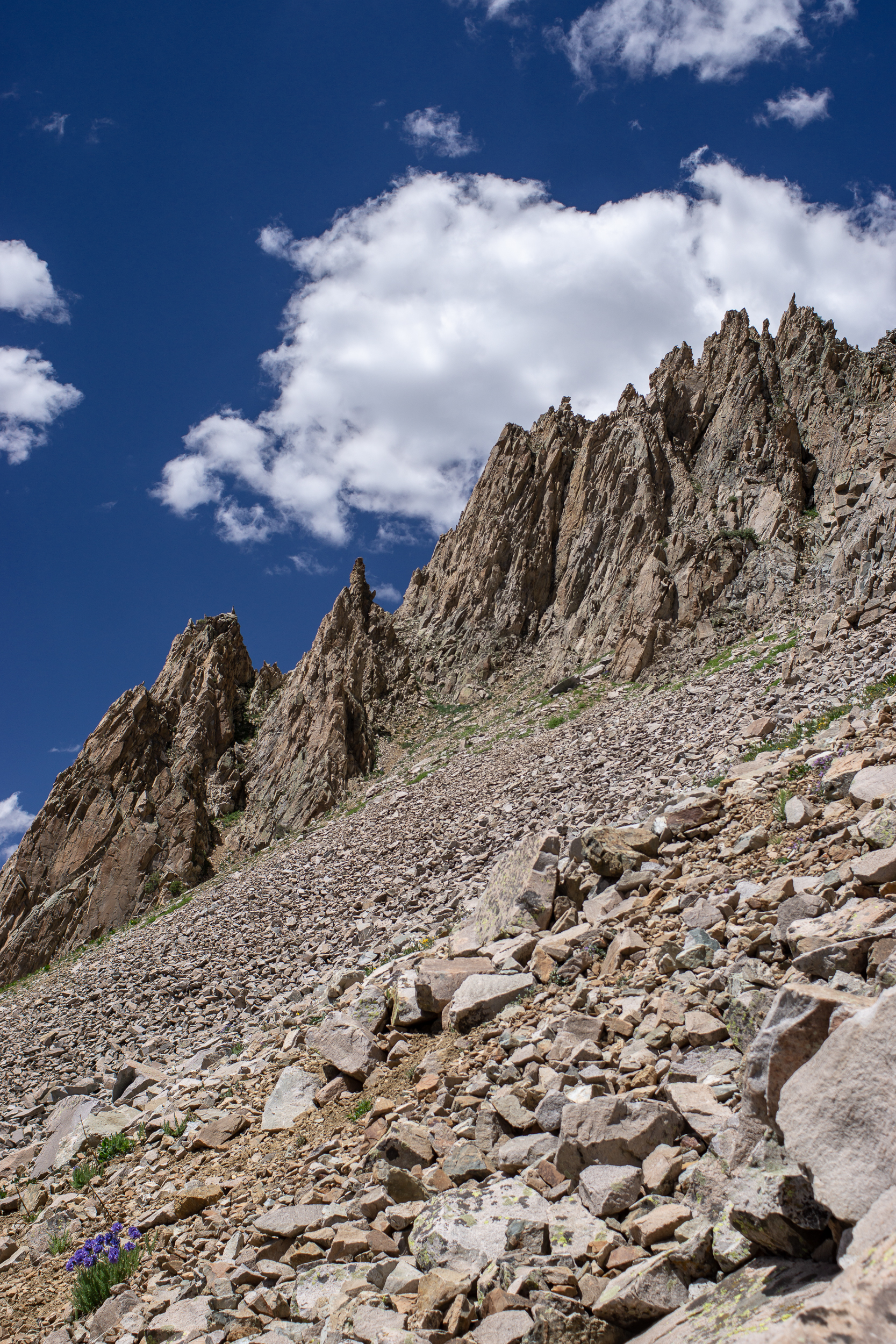It takes a special friend to forgo family and be willing to travel over Thanksgiving weekend. Luckily I have one of those friends. In short, our phone call goes like this:
Me: “Hey”
Him: “Hey”
Me: “I have a kinda crazy plan for Thanksgiving...”
Him: “I’m in!”
The plan? Rent a backcountry hut, fill it with friends, build a pulk and lug up a turkey + all the fixings for Thanksgiving. Ok, maybe not that crazy, but certainly fun.
He’s not lying, he books tickets from Seattle to Denver shortly after our phone call. After looking through the huts we settle on Jackal Hut, part of the 10th Mountain Hut system. Not too far from the front range and close to Vail where about half of our guests live (this will end up being very fortuitous, but I’ll get to that later).
The hut is only 3 miles from where we park but it climbs 2,400ft. We’re fully loaded and then some. I have snowshoes & skis on my pack and then the pulk which has 2 12lb turkeys, 2 pies, various bottles and bladders of wine and who knows what else. Halfway up, when I’m seriously regretting my offer to haul all this up, I do a mental approximation of the weight in the pulk - 50 lbs at least.
The first half of the way up has patchy snow and mud (makes the pulk pulling almost impossible), thankfully the second half is snow covered and much better (though still insanely steep). We make it up to the hut around 3pm, exhausted, but in good spirits. Time to get this turkey cooking and the bread proofing.
Getting the woodburning oven up to a good heat works surprisingly well. I’m nervous that actually cooking the turkey for 3 hours won't be so easy… it turns out to be a little finicky but the turkey comes out looking awesome (no one took a picture, wtf). The bread also comes out nice after rising for a few hours. The rest of the crew chips in and makes green beans, mac and cheese, potatoes, stuffing, cranberries and gravy. After stuffing ourselves and downing a few glasses of my Seattle friend’s home-made wine we all agree that persevering to get all this up here was worth it. Now we have to eat more so I don’t have to carry it down!
Day 2 brings another 3 guests, 6” of snow, skiing and turkey #2. This one has been precooked and smoked and requires much less effort but tastes amazing, especially with all the leftovers from the night before.
Day 3 it’s still snowing. After skiing and lazing around the hut we descend down to the cars (it takes less than ½ the time it took to get up). There is about a foot of snow on the cars and the snow is flying horizontally. The road back to the highway is flat and even with the low visibility I don’t think too much of the snow, until we get to the highway. The plows have been busy… plowing us in behind a 4 foot high wall of snow, ice and grit. I should have known better, but that’s irrelevant now. After using snowshoes and hands to shovel a hole for the car to fit through I back up and get ready to gun it through (again no pictures, sorry!). My friends are ready to push from behind to get me over the hump if need be (it was needed). I make it over and we slowly crawl on the highway back towards I-70. Cars are in the ditch all over the place and the snow keeps getting worse. When we get back in cell range we discover I-70 has been closed. There’s no way I’m turning around and going back over the pass to try to get out (the usual 1.5 hours back to Boulder is estimated at 6 hours).
Thankfully one of our hut crew lives in Minturn (where we are stranded). We head back there and wait until the rest of the group shows up. It’s decided that in exchange for dinner and beers we can all sleep on his floor for the night. Empire Records on Netflix it is, slumber party style!
If you go




